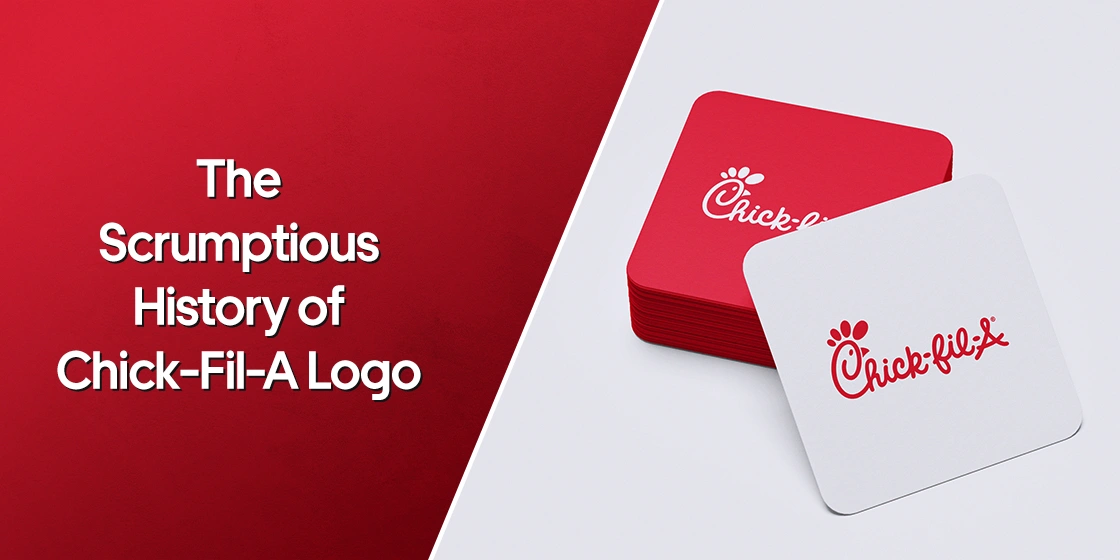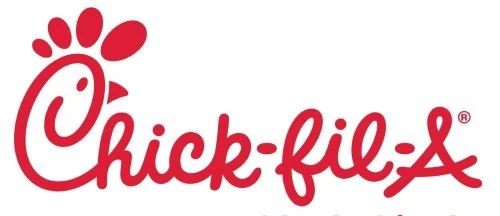
Table of Content
Discover the Complete History of Famous Chick-fil-A Logo Below
When it comes to rank best fast food chains in the world, the name of Chick-fil-A always comes instantly to the mind. It is a famous American food chain specializing in producing highly scrumptious fast food. The Chick-fil-A logo is therefore popular among many Americans, especially those who love chicken stuffed fast food. It refers to a company that is active in the American market since 1960s. The emblem therefore competes against the likes of KFC, McDonald’s and others in the US, showcasing the true prominence of its decades old brand.
Created by professional logo design services, the concept of Chick-fil-A logo is quite simple and self-explanatory. Anyone by having a first glance of the logo can easily tell the background and specialty of the fast food chain. Though many people particularly adore the chicken burgers of the store, but their broasts and nuggets are also one of the key components of their success.
In this blog, we will discuss the history of the Chick-fil-A logo in detail. We will let you know how the logo was created and changed from time to time due to a variety of reasons. Let’s start from the basics understanding why Chick-fil-A is popular in the US where competition is already quite high among many brands.
What Makes Chick-fil-A Popular in the US?

Chick-fil-A’s popularity in the US can be attributed to several factors, including its high-quality food and excellent customer service. The chain is known for its signature chicken sandwiches, which are made with premium ingredients and cooked to perfection. Additionally, Chick-fil-A has a reputation for providing exceptional customer service, with employees often going above and beyond to ensure customer satisfaction.
Another factor contributing to Chick-fil-A’s popularity is its unique company culture. The chain is known for its strong Christian values, which are reflected in its treatment of employees and its commitment to giving back to the community. This has resonated with many customers, who appreciate the company’s ethical approach to business.
Finally, Chick-fil-A’s marketing strategies have also played a significant role in its success. The chain has a strong social media presence and regularly engages with customers through creative campaigns and promotions. This has helped to build a loyal following and generate positive word-of-mouth buzz, further solidifying Chick-fil-A’s position as a beloved brand in the US.
History of Chick-fil-A Logo
Chick-fil-A has a very vast and rich history in the US. The brand is operating since 1960s, hence its logo has also been changed several times during the last few years. If you do not know about the previous logos that came before the current one, take a look at the complete history given below.
Chick-fil-A Logo – 1960

Chick-fil-A, the renowned fast-food chain, embarked on its visual identity journey in 1960 with its inaugural logo. This pioneering design, though simple, served as the foundation for the brand’s evolving visual language. However, its tenure was relatively brief, lasting only three years. This vintage logo design, while significant in establishing the brand’s initial visual presence, would soon give way to new iterations as Chick-fil-A sought to refine its image and appeal to a wider audience.
While the specific details of the first Chick-fil-A logo and the reasons for its replacement remain subject to further exploration, its short-lived existence serves as a valuable reminder of the iterative process of brand development. As Chick-fil-A continued to grow and innovate, its logo underwent further transformations, ultimately culminating in the iconic design that is recognized and cherished by millions of customers today.
Chick-fil-A Logo – 1963

The year 1963 marked a subtle yet significant evolution in Chick-fil-A’s visual identity with a redesigned logo. While honoring the core elements of its predecessor, this iteration introduced subtle refinements. The most notable change was the repositioning of the chicken’s head, which was now positioned lower within the design. This subtle adjustment created a more balanced and visually appealing composition, enhancing the overall aesthetic of the logo.
The decision to maintain the key elements of the previous logo demonstrated Chick-fil-A’s commitment to preserving brand continuity and familiarity. By retaining recognizable elements, the company sought to maintain a sense of consistency for its growing customer base while introducing subtle improvements. This approach to logo refinement exemplifies a careful balance between maintaining brand heritage and embracing subtle evolution.
Chick-fil-A Logo – 1964

The year 1964 witnessed a pivotal moment in Chick-fil-A’s visual identity with a dramatic overhaul of its minimalist logo. This redesign marked a significant departure from previous iterations. The most striking change was the integration of the chicken’s head directly into the lettering, eliminating the previously separate depiction. This innovative approach created a more cohesive and visually dynamic composition, enhancing the logo’s overall impact and memorability.
By seamlessly merging the chicken head with the lettering, Chick-fil-A achieved a more sophisticated and contemporary look. This integration not only strengthened the visual connection but also created a more distinctive symbol. This bold design decision demonstrated a willingness to experiment and push creative boundaries, resulting in a logo that was not only more appealing but also more effectively communicated the brand’s identity.
Chick-fil-A Logo – 1975

The year 1975 witnessed a subtle yet significant refinement to Chick-fil-A’s logo. This iteration maintained the core elements of the previous design, including the distinctive cursive typeface with its characteristic rounded shapes. However, the 1975 version introduced a notable enhancement by emboldening the lettering. This subtle adjustment not only improved the logo’s impact and readability but also conveyed a sense of strength and confidence.
By opting for a subtle refinement rather than a radical overhaul, Chick-fil-A demonstrated a commitment to maintaining brand consistency and familiarity. This approach allowed the company to retain the core elements that had come to define its visual identity while introducing subtle enhancements that modernized the logo and ensured its continued relevance in the evolving marketplace.
Chick-fil-A Logo – 1998

The year 1998 marked a subtle yet significant evolution in Chick-fil-A’s visual identity with a refined version of its iconic logo. Building upon the foundation established by its predecessor, this iteration introduced subtle yet impactful changes. Notably, the masculine font underwent a slight refinement, becoming marginally thinner. This subtle adjustment created a more refined and elegant aesthetic, enhancing the overall visual appeal of the logo.
Perhaps the most striking change in the 1998 redesign was the shift in color palette. The entire emblem, previously rendered in black, was now presented in a vibrant red. This bold color choice injected a sense of energy and vibrancy into the logo, making it more visually arresting and memorable. The use of red also effectively conveyed a sense of warmth and approachability, aligning with the brand’s focus on creating a welcoming dining experience.
Chick-fil-A Logo – 2012

The year 2012 witnessed a subtle yet significant refinement to Chick-fil-A’s iconic logo, marking a contemporary update to its visual identity. This iteration carefully preserved the core elements that had come to define the brand’s visual language while introducing subtle yet impactful modifications. The most notable change involved a slight refinement of the chicken’s contours, particularly the beak, which was subtly closed for a more streamlined appearance.
These subtle adjustments, coupled with a brightening of the red color and a modernization of the lines. The refined contours and vibrant color palette contribute to a more contemporary aesthetic, ensuring the logo remains relevant and appealing to a modern audience. This iterative approach to logo refinement exemplifies Chick-fil-A’s commitment to continuous evolution and maintaining a strong and enduring visual identity.
Frequently Asked Questions
| Why Chick-fil-A is popular in the US? Chick-fil-A’s popularity stems from its high-quality food, exceptional customer service, and strong company culture. These are the attributes that have made Chick-fil-A famous in the US. |
| What is the color of Chick-fil-A logo? Earlier, the Chick-fil-A logo had a pure black lettering. However, after the 2012 redesign, the Chick-fil-A logo primarily uses the red and white colors. |
| Which fast food chains are more famous in the US? There are many fast food chains popular in the US. However, some exceptional brands like McDonald’s, Starbucks, Chick-fil-A, Taco Bell, and Wendy’s consistently rank among the most famous fast-food chains in the United States. |
Final Words
That concludes our entire article in which we have discussed the complete history of Chick-fil-A logo. It is undoubtedly a famous emblem in the fast food circuit of the US. People have adored the Chick-fil-A sandwiches and other stuff over a long period of time. That is why the Chick-fil-A logo has built a distinctive identity in the US, making the brand a big hit among the foodies. It has also evolved quite a lot over the years, precisely to keep the company branding fresh and updated. This blog has discussed all those iterations in detail, defining when and how they were introduced to magnify the store’s branding.

Logopoppin
Logopoppin is a graphic design agency that specializes in logo designing, web development, video production and advanced branding services. We love to innovate businesses with new age technologies, allowing them to improve their visual reputation.



